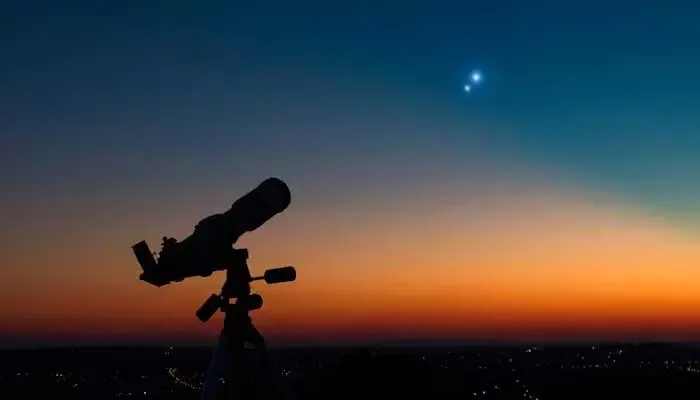The planetary parade, an awe-inspiring celestial alignment, is gracing the night skies in January and February 2025. This rare phenomenon involves six planets—Venus, Mars, Jupiter, Saturn, Uranus, and Neptune—lining up from Earth’s perspective, creating a breathtaking display for stargazers.
What is a Planetary Parade?
A planetary parade occurs when several planets align closely in the sky as seen from Earth. Though “planetary parade” is not an official astronomical term, it captures the public’s imagination and excitement for such cosmic events. According to NASA, this alignment is purely visual and doesn’t affect the orbits or behavior of the planets themselves.
Key Dates and Peak Visibility
The event began on January 21, 2025, but its brilliance will peak around January 29 due to the full moon illuminating the night sky. Stargazers can enjoy the spectacle until mid-February. Excitingly, Mercury will join the lineup briefly in March, completing the alignment of all seven planets in the solar system.
John Goss, an astronomer with EarthSky, described January as “an excellent time to observe the planets,” encouraging enthusiasts to take advantage of clear skies for optimal viewing.
Read: Apple iOS 18 and iPadOS 18 Adoption Rates Revealed
How to Watch the Planetary Parade
Observing the planetary parade requires a clear sky and minimal light pollution. The best viewing times are shortly after sunset or before sunrise, depending on your location. Look toward the western horizon for Venus and Jupiter, while Mars, Saturn, Uranus, and Neptune will appear higher in the sky.
For those seeking a more immersive experience, observatories and parks across the United States are hosting special events. Notable locations include:
- Hayden Planetarium, New York
- Griffith Observatory, Los Angeles
- McDonald Observatory, Texas
Additionally, stargazing apps like Star Tracker, Sky Map, and Star Walk can help identify the planets and enhance your viewing experience.
Tips for Observing the Event
- Find a Dark Spot: Choose a location with minimal artificial light for the clearest view.
- Use Binoculars or a Telescope: While Venus, Mars, and Jupiter are visible to the naked eye, Uranus and Neptune require optical aids.
- Plan Around the Weather: Check local forecasts to avoid cloudy nights.
- Bring a Star Map: Familiarize yourself with the alignment to locate all six planets.
The Spectacle of Celestial Alignment
The planetary parade is a reminder of the universe’s grandeur. While it may seem like an unusual event, such alignments occur periodically, offering stargazers opportunities to reconnect with the cosmos. Whether observing from your backyard or attending a guided event, this celestial phenomenon is a sight to behold.
Make the most of this extraordinary event, as it promises to be one of the year’s most mesmerizing astronomical displays.
Follow us on Google News, Instagram, YouTube, Facebook,Whats App, and TikTok for latest updates
